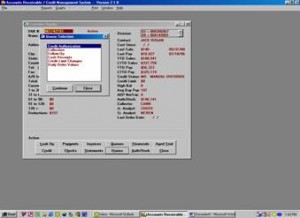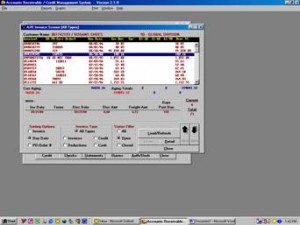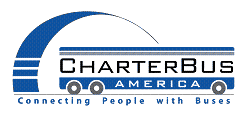Case Study: Credit Management Software – H.H. Brown
Background:
Established in 1883 H.H. Brown Shoe Company Inc. (HHB), a subsidiary of Berkshire Hathaway Inc, is a major supplier of premier work shoes and boots, rugged outdoor footwear and men’s and women’s comfort casual shoes. HHB is comprised of several independent operating divisions to take advantage of the diversity of the products. The result of operating in this manner and administering 11,000 active accounts in both the United States and abroad, created an environment where it was difficult to manage Accounts Receivable and associated credit risks.
H.H. Brown Objectives:
Eliminate third party management of Accounts Receivables.
Several HHB divisions utilized credit management organizations (Factors) to manage their A/R and credit approval decisions. In addition to adding extra costs, this relationship did not allow for standardized inter-divisional application of credit and often resulted in processing and shipping delays.
Establish managerial control of credit process.
HHB recognized that an effective credit management system needed to be flexible enough to allow for dynamic changes to credit calculation formulas. They also recognized the need to create an environment that allowed credit analysts to efficiently manage the credit requests of their customers while providing the organization an opportunity to monitor these transactions on an exception basis.
Creation of an effective automated processing environment.
Because the multiple divisions involved different reporting formats, HHB needed a system that would create a methodology for consistent reporting. Customer information, requests for credit, payments, and other related information needed to be processed for the divisions. In addition to daily batch processing, priority requests needed to be processed on an ‘at once’ or live basis.
ISG Solution:
Based upon this information, and recognizing the close business relationship that had developed between the two organizations, HHB elected to take a clean slate approach and forecast what the future would look like. HHB requested ISG to develop an Accounts Receivable Credit Management System (ARCMS) that included software features such as credit scoring algorithms based upon user maintained parameters, task flow and work center management, and detailed transaction audit trails. Another significant requirement was that the system had to allow for unlimited User Defined rules to limit the amount of programmer reliance.
Today ARCMS consists of the following components:
Batch Processing of credit requests, customer updates, customer order (credit requests), invoices, and payment information:
HHB divisions transfer files to headquarters on a nightly basis. Invoices and payments are applied to Accounts Receivable and orders are checked for credit, based upon dynamic scoring routines. Credit decisions are then sent back to the divisions. Those orders not automatically addressed are placed in the appropriate individual’s Credit queue for review and manual intervention.
Real-time interactive credit requests:
Individual ‘at once’ credit requests are processed immediately and results are sent directly to the requesting division.
Advanced Scoring Algorithms integrated with Dun and Bradstreet and other user defined parameters
ARCMS evaluates, assigns, and manages credit to HHB customers based upon management controlled scoring formulas utilizing D&B and other pertinent data. Orders failing to receive credit are assigned to the work queues of credit analysts for individual review. Management tools such as length of time and number of transactions in individual queues trigger alarm warnings based upon user- defined criteria. These rules can be established company wide or tailored to each division’s requirements.
Collection Management
 All of the features provided by the system are meaningless if there is no methodology for the collection of delinquent accounts, so a queue management system was put into place. With user defined rules and aging tolerance,this queue can now be reloaded at managements discretion. A set of user defined rules tests the aging and values to determine which accounts are chosen. Once the queues are loaded the process is date driven and allows for a follow -up calendar. When a past due issue is resolved, and if that results in removing the account from the established parameters, the account is eliminated from the queue. Other tools were put into place that allow for all invoices to have a stored image, making a customer’s request for a copy just a point and click away. There is no wasted time in sitting by a microfiche or film machine, or thumbing through copies of paper. This process now allows the user to email invoices to a customer or generate a batch of multiple invoices that are then transmitted to HHB’s fulfillment source for mailing the next day.
All of the features provided by the system are meaningless if there is no methodology for the collection of delinquent accounts, so a queue management system was put into place. With user defined rules and aging tolerance,this queue can now be reloaded at managements discretion. A set of user defined rules tests the aging and values to determine which accounts are chosen. Once the queues are loaded the process is date driven and allows for a follow -up calendar. When a past due issue is resolved, and if that results in removing the account from the established parameters, the account is eliminated from the queue. Other tools were put into place that allow for all invoices to have a stored image, making a customer’s request for a copy just a point and click away. There is no wasted time in sitting by a microfiche or film machine, or thumbing through copies of paper. This process now allows the user to email invoices to a customer or generate a batch of multiple invoices that are then transmitted to HHB’s fulfillment source for mailing the next day.
Security
At HHB, and at the discretion of management, the note system and receivables are in a public forum. The ARCMS system has many different levels of security that are broken down by User Groups(Purpose), and Individual function within the group. This way you can limit the viewable information, the entry of data, i.e. cash applications, write off authority and credit extension.
General Features
D&B requested information is fed into ARCMS. There are warnings that are viewable to the user ; for example, if a particular accounts limit has changed plus or minus. Each working area is able to record and view various notes through the note system. This allows for anyone to receive a phone call, or answer a question regardless of who might be directly responsible for the account. The most important feature is flexibility. The ARCMS system allows the rules and parameters to be altered without the intervention of an outside administrator, who is just another user with the appropriate security.
Contact ISG today to find out how our Custom Software Developers can build a custom credit management application for your organization.






